Learn

Population Growth
A population is a group of organisms of the same species that live in the same geographical area. Populations grow when the birth rate is greater than the death rate within the group. Populations experience exponential growth J-Curve graph until factors within an environment start to limit their ability to grow. The abiotic and biotic factors that limit population growth are called limiting factors.
One of the main limiting factors within an ecosystem is food or energy. Other limiting factors include:
- the amount of space available,
- the amount of habitat/shelter available, and
- the amount of water available.
All organisms need energy, space, shelter, and water to survive. There are only so many of these natural resources available within an ecosystem, so the total number of organisms that an ecosystem can support is directly related to the amount of these resources.
The number of organisms that an ecosystem can support based on its natural resources is known as its carrying capacity and is often represented as (K). As population growth reaches the ecosystem's carrying capacity, the population's growth rate begins to decrease. The graph that represents this growth goes from exponential growth J-Curve graph to logistic growth S-Curve graph .
When population growth reaches the carrying capacity, birth rates and death rates are close to equal. Because of these limiting factors in the environment, populations cannot to continue to grow indefinitely.
Graph Citation:
Boundless. "Logistic Growth." Boundless Biology. Boundless, 03 Jul. 2014.
Retrieved 21 April 2015.

Density-Dependent
Energy, space, shelter, and water are the main limiting factors within an ecosystem. These factors are known as density-dependent factors because they are related to a population's size and density. There are several other density-dependent factors to consider.
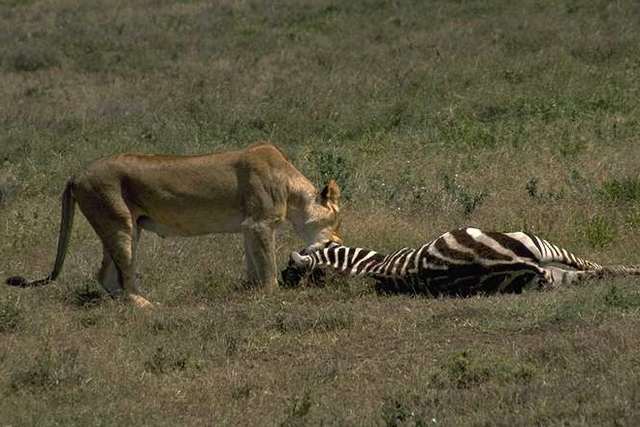 Think back to the food webs and energy pyramids you learned about in Unit 1. You will remember that individual populations do not exist alone. An ecosystem is made up of many interesting populations known as communities. These populations of different organisms interact with one another. They depend on each other for food in a predator-prey relationship known as predation. Also, many populations within ecosystems rely on the same food source, habitat, and water source. This type of relationship is known as competition.
Think back to the food webs and energy pyramids you learned about in Unit 1. You will remember that individual populations do not exist alone. An ecosystem is made up of many interesting populations known as communities. These populations of different organisms interact with one another. They depend on each other for food in a predator-prey relationship known as predation. Also, many populations within ecosystems rely on the same food source, habitat, and water source. This type of relationship is known as competition.
Both predation and competition relationships contribute to a population's rate of growth. The more populations that compete for the same food source, the less energy is available for each population. This translates into the populations not being able to grow as much as they would if they were the only population using the natural resource.
Other factors that limit population growth are:
- Parasitism - A relationship between a parasite and its host in which the parasite lives on or in the host and gets food from the host at the host's expense. (The tick below is an example of a parasite.)
- Disease
- Migration - The movement of individuals of a population, such as the birds pictured below. There are two types of migration that can have an impact on the growth of a population.
- When individuals of a population enter into a new area/population it is known as immigration.
- Emigration is when organisms leave a population for another area.
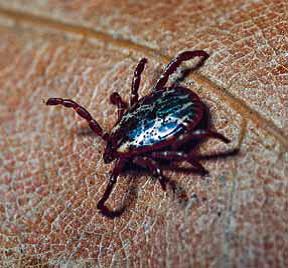
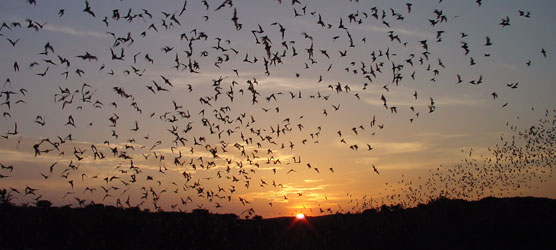
As populations begin to grow, density-dependent factors begin to have a greater impact on controlling population size. The larger and denser the population, the more density-dependent factors affect the growth of the population.

Density-Independent
There are also limiting factors that are not dependent on a population's size or density. These are called density-independent factors. Examples of density-independent factors are
- events, such as natural disasters (floods, blizzards, and drought) and
- human activities, such as cutting forests, and damming rivers.
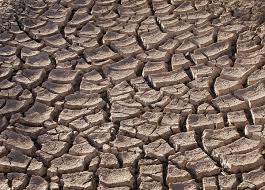

Whereas density-dependent factors have a greater affect on larger and denser populations compared to smaller and sparser populations, density-independent factors tend to have the same effect no matter the size or density of the population. Density-independent factors alter the availability of the natural resources in an area, which in turn, affects the carrying capacity
number of organisms the ecosystem can support
.

Summary
To illustrate how density-dependent and density-independent works, consider this:
The density-dependent factors, such as disease, will spread through a flock of sheep more quickly if they are in close contact with each other (dense) rather than 1/4 mile apart (sparse).
The density-independent factors, such as drought, covering 1/2 of a state will affect the population no matter how sparse or dense they are. So this factor (drought) is not affected (is not dependent) by how dense or close the sheep are.
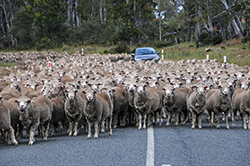
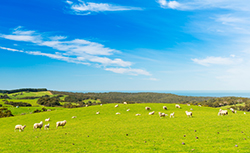
 |
 |